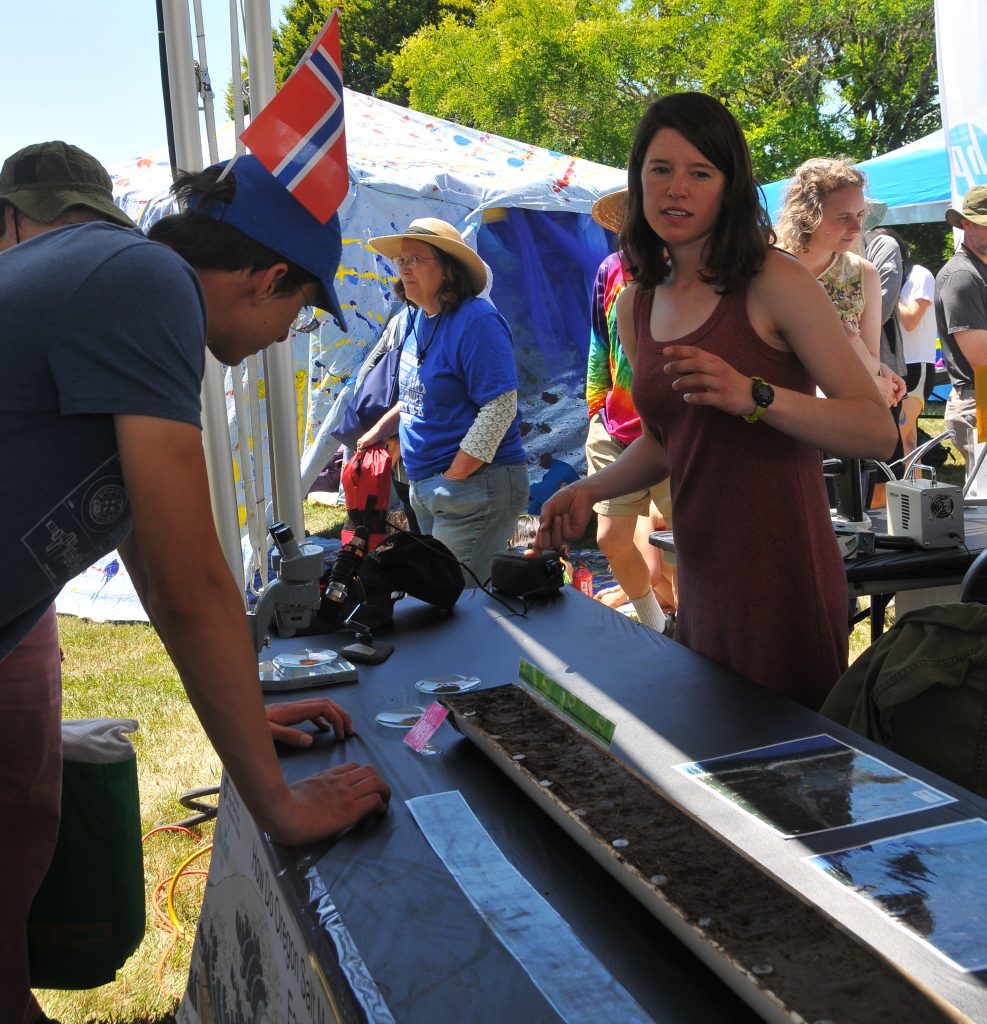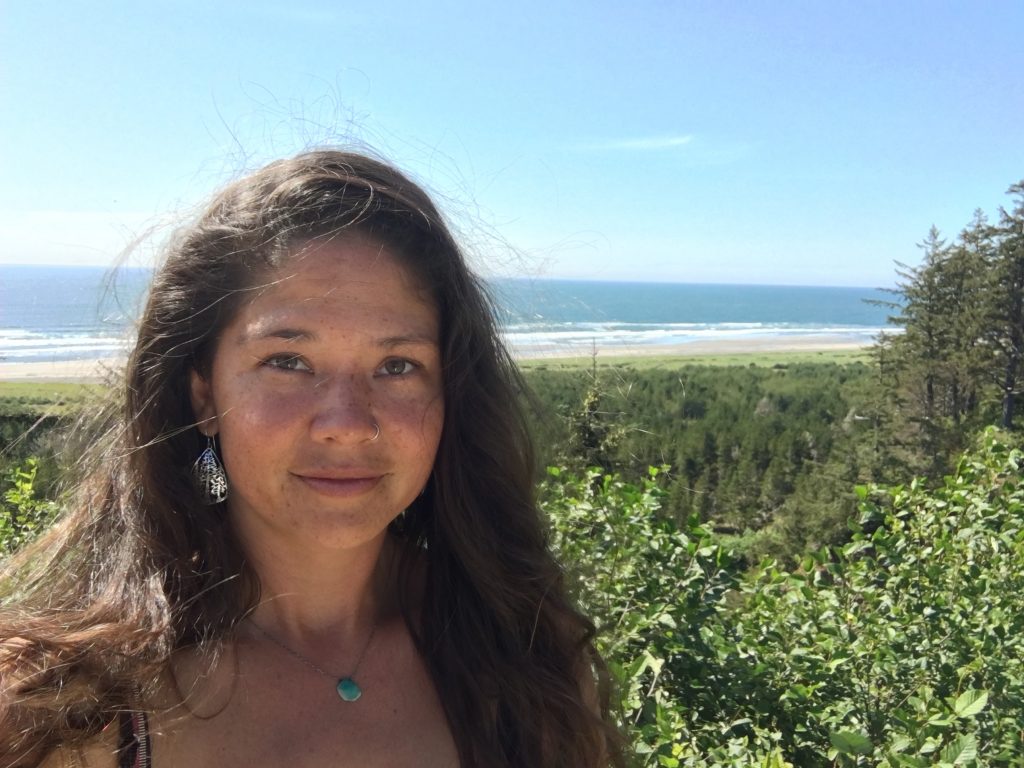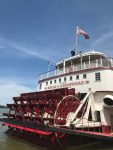My first summer as a full-time Oregon coast resident has been full of trips to the beach, blackberry picking, hikes, and hammock reading. On most days after work, I am able to enjoy walking my dog along the bluff by our house where you can often spot the telltale spray of whales feeding in the coastal waters. However, given my current project (read about it here!), I can’t help but think about the issue of whale entanglement that occurs when these animals come into contact with fishing gear, and specifically Dungeness crab fixed gear. As part of my fellowship, I will drafting a section for the Dungeness crab fishery management plan (FMP) describing this complicated problem and the work that is being done throughout Oregon and the west coast to address it.
Whale entanglements on the U.S. West Coast have historically occurred at low levels, but an increase in the number of confirmed entanglements has been reported since around 2014. A number of complex factors may be contributing to the increased occurrence of entanglements including changing environmental conditions, altered whale and prey abundance and distribution, shifting fishery effort, and improved public reporting. However, a range of information gaps currently exist that hinder our ability to effectively reduce risk.
Most entanglement reports are the result of opportunistic sightings which are “confirmed” by NOAA Fisheries using photos or videos of the entangled whale, follow-up observations by NOAA staff, or consultation with experienced partners involved in the West Coast Region Marine Mammal Stranding Network. If these criteria are inadequate or unavailable, then these reports cannot be confirmed.
While reporting and response efforts are continually
improving, there is still a high degree of uncertainty about the source of
entanglements. Whales travel great distances which can make it incredibly
difficult to determine the timing and location of entanglements. In a large portion
of confirmed reports, it is also not possible to identify the gear type or
specific fishery it is associated with. It is clear, however, that whales are
entangled in a wide variety of gear types and configurations which contributes
to the complexity of the issue and makes a simple solution unlikely.
The majority of identifiable entangling gear has been attributed to trap or pot fisheries, and particularly the commercial Dungeness crab fishery. This issue was highlighted in 2017 by a lawsuit filed by the Center for Biological Diversity against the California Department of Fish and Wildlife for allegedly allowing the Dungeness crab fishery to take whales listed under the Endangered Species Act without an approved Incidental Take Permit (ITP). In March 2019, a settlement agreement was reached resulting in the early closure of the California fishery on April 15th and including a number of measures for future seasons.
State management agencies along the west coast are actively working to reduce the risk of whale entanglements in Dungeness crab and other fixed gear. In Oregon, the Oregon Department of Fish and Wildlife (ODFW) is working with researchers, industry, state and federal partners, and the Oregon Whale Entanglement Working Group (OWEWG) to develop management measures and strategies to supplement existing regulations that reduce entanglement risk (e.g., limited entry and pot limits, summer fishery trip limits, post-season derelict gear retrieval program, etc.). The agency is also collaborating with researchers at Oregon State University’s Marine Mammal Institute on a study to better understand the temporal and spatial distribution of whales off Oregon and habitat use patterns. In April 2019, ODFW formalized their intent to apply for an ITP and has taken steps to initiate the multi-year process.
Additionally, ODFW will be recommending management measures for whale entanglement mitigation through a phased approach to the Oregon Fish and Wildlife Commission (OFWC) in the coming months. Phase 1 will be recommended in September for implementation at the start of the 2019-20 crab season, while Phase 2 will be recommended in early 2020 for implementation as early as spring 2020. Recommended management measures aim to improve our understanding of when crab fishery effort overlaps with whale occurrence throughout the season and our ability to determine where and when entanglements originate. Measures will also be recommended to reduce the number of vertical lines in the water during a potential “late season” fishery when whale feeding aggregations are commonly found off Oregon. Details of these rule-making packages can be found in the ODFW industry notice found here.
Voluntary best practices that the Oregon crab fleet can take
to reduce the risk of whale entanglement have also been developed by the OWEWG and
are available here.
I look forward to learning more about this issue in the coming weeks as ODFW prepares to recommend Phase 1 of the whale mitigation rule-making packages to the OFWC. Moving forward, I will work to include in the FMP the collaborative efforts of various partners working to mitigate the risk of whale entanglements, while maintaining the vitality of the crab fishery.
Additional references
Braby, C. 2019. Reducing risk of whale entanglements in
Dungeness crab gear – building resiliency into the crab management framework.
Director’s Report. Oregon Department of Fish and Wildlife, Marine Resources
Program. Available at https://www.dfw.state.or.us/agency/commission/minutes/19/06_June/Director’s%20Report_Whale.pdf
NOAA Fisheries. 2019. 2018 West Coast Whale Entanglement
Summary. U.S. Department of Commerce, National Oceanic and Atmospheric
Administration, National Marine Fisheries Service. 10 pp. Available at https://www.fisheries.noaa.gov/resource/document/2018-west-coast-whale-entanglement-summary
Oregon Department of Fish and Wildlife (ODFW). 2019.
Industry notice, April 12, 2019. 4 pp. Available at https://www.dfw.state.or.us/MRP/shellfish/commercial/crab/docs/Industry%20Notice%202019-0412_FINAL.pdf
Saez, L., Lawson, D., DeAngelis, M., Petras, E., Wilkin, S.,
and Fahy, C. 2013. Understanding the co-occurrence of large whales and
commercial fixed gear fisheries off the west coast of the United States. NOAA
Technical Memorandum, NOAA-TM-NMFS-SWR-044. 102 pp.








